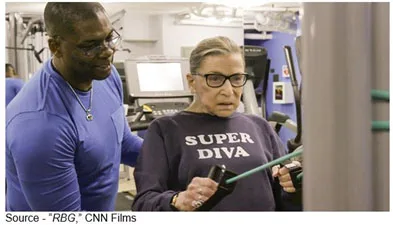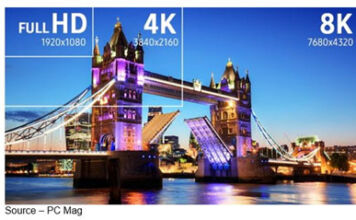Winning the Streaming Viewer Starts with a Strong Platform

It doesn’t seem that long-ago soothsayers warned that important events – you know, Victoria Secret’s 1st streamed fashion show 20-plus years ago or that the annual Super Bowl and World Cup would break the Internet.
It didn’t happen.
Then, in 2007, the red envelope DVD rental folks thought they had a better way of delivering an evening’s entertainment, bypassing the mail carrier and streaming content.
It was such a dumb idea that Time Warner CEO Jeff Bewkes said, “It’s a little bit like, is the Albanian army going to take over the world? I don’t think so.”
Seemingly overnight, content viewing has gone from living by the TV schedule to anywhere, anytime, any screen; and the telcos (wired and wireless) of the world are hellbent on retiring the cable guy.
But at this years’ CES, the cable industry responded by delivering new services, including OTT (over the top) content service and a growing range of fixed and wireless delivery options.
Christopher Ripley, Sinclair’s president, pointed out that broadcasters are shifting how they view themselves when he said, “The notion of a separate broadcast space is totally antiquated. We’re competing with the diversified media companies, we’re competing with the telecom
operators, we’re competing with the Internet companies. We’re all in each other’s spaces. We’re all customers of each other.”
To show that the cable industry was going to remain germane to the content consumer, their Cable Labs announced they would be increasing their cable performance from 1GB to 10GB service (in both directions).
But the bottom line is that the viewer (male or female, 9 or 90) doesn’t care who is getting them their content as long as it is delivered quickly, smoothly, consistently — every time, all the time.

And as the content creation industry has moved from SD to HD to 4K (and, in the very near future, 8K), preparing and managing the video stream has become increasingly important for everyone in the creation to viewing chain to meet the consumers current as well as rising expectations.
While many of the mobile folks were wildly hawking the speed and beauty of 5G wireless service (some were more cautious about their claims and timing), what was curiously missing at this year’s CES were people talking about the ATSC (Advanced Television System Committee) 3.0 televisions to handle the new anywhere, any screen video streams.
ATSC 3.0 – or, as some prefer to call it, Next-Gen TV – was the leading discussion point last year at NAB NY because it checks all the boxes:
- Enhanced linear TV, plus on-demand support
- Subscription and pay-per-view (PPV) support
- Ability to handle higher-resolution images as well as efficient, immersive audio
- Conditional access and digital rights management (DRM) capabilities
- Mobile and fixed device, plus companion device support
- Hybrid delivery (broadcast and broadband), combined with pushed content
- Support for UHD broadcasts in conjunction with a tiered approach that enables support for SD and HD while enabling extensibility to 8K and other future technologies
- Facilitates OTA connectivity to mobile devices directly and via Wi-Fi gateways
- Leverages OTA and OTT distribution in seamlessly integrated hybrid services that enable localization and even personalization of services, features and advertising
- Builds collaborative business models aimed at lowering the costs of the next-gen transition and driving new revenue streams.

To keep from making fools of ourselves, we turned to Allan McLennan, head of PADEM Media Group and an individual who has been involved in OTT since its infancy.
“One of the reasons we may not have heard a lot of noise around ATSC 3.0 at CES is due to 5G paralyzing a lot of the conversation.” McLennan said.
“However, through Sinclair’s STIRR and Pearl TV’s consortium, new televisions connected not only as they always have been but also wi-fi (OTA) enabled connections and/or smart boxes are on their way now,” he emphasized. “And they will deliver tremendous viewing options.”
“We’ve had a burst of 5G wireless enthusiasm with carriers,” he continued, “that are making a serious play to enhance existing networks or in many areas build out whole new infrastructures.
“Due to the sheer magnitude of physical build out – logistics, antennas, truck rolls,” he commented, “it is no small task and not something that just a flip of a switch can take care of.
“In many cases, the 5G available-now messages are being softened,” McLennan observed. “However that said…5G is just around the corner.
“When we talk about the benefits of ATSC 3.0,” he said, “its technology stack closely aligns with 5G mobile technology and will be able to provide partitioning of services via ‘slicing’ techniques. This can uniformly provide a seamless, accelerated and more bridging operating environment for OTA broadcast TV and mobile domains for both 5G and ATSC 3.0 markets.
“It will be a win-win now and in the near future,” he concluded.

Serving 90 percent of homes in the U.S., cable operators such as Comcast, Charter, Cox, MediaCom, and Midco are beginning to implement 10G now along with international operators like Rogers, Shaw, Vodafone, Taiwan Broadband Communications, Telecom Argentina and Liberty Global. Others will begin field trials in 2020.
“It’s not going to be wired or wireless broadband,” McLennan explained, “5G will be a powerful incentive for people to upgrade their devices – and their data plans. It will drive new business models especially when services and devices are available so people can enjoy more content in more places smoothly and easily. But if content is offloaded to the provider’s or ISP (Internet Service Provider) partner’s Wi-Fi service, it could get challenging.”
McLennan quickly added that a lot of people think content service is an either/or situation – having cable or cutting the cable and going wireless.

“It’s true that there is a major move by households around the globe to ‘cut’ or shave their cable service,” he said, “but they haven’t cut themselves off movie/TV viewing; they’ve simply taken a more active role in the control of when and how they watch the content. In fact, people are consuming more content than ever, especially over IP.”
McLennan noted that what we now have is an embarrassment of riches when it comes to viewing options and that we’re beginning to see a la carte – SVOD, TVOD as well as “free” OTT (ad based) – channels co-existing with appointment viewing and streaming, especially for younger consumers.
For example:
- Nielsen reported that Americans watch in excess of 8 billion hours of content monthly on connected TV device
- Netflix reported that its move, Bird Box, was viewed by 45 million accounts in its first week
- Pew Research reported that 61 percent of 18-29-year-olds watch TV primarily via streaming services 47 percent of adults 22 to 45 watch no content on traditional platforms
- Among all adults, 28 percent said they “usually” use a streaming service to watch TV, up from 20 percent a year ago
- According to Kagan research, OTT video usage will continue to grow, as its integration into multichannel, hybrid free-to-air and connected TV/smart TV platforms deepens. Most platforms in Western Europe already integrate OTT services
- Parks reported that 77 percent of the U.S. households subscribe to Pay TV a drop from 87 percent. Over half subscribe to Netflix, 38 percent subscribe to two or more OTT services

McLennan noted that over the next few years, Next-Gen TV will become the norm for broadcast stations as well as content providers and D2C delivery services. Next-Gen ensures robust delivery performance while allowing consumers to seamlessly shift viewing between their TV and on-the-go devices.
“For the consumer, it will provide enhanced video and audio quality with low-to-no IP latency,” McLennan said. “And it is even more important to content creators, providers and aggregators because it addresses their major concern … content protection.”
“While it is true Netflix and Amazon shows and series have been pirated,” he said, “however the data protection services they use – such as Widevine DRM – is producing good results without being cumbersome to the viewer for the most part.” McLennan continued. “It will undoubtedly get better and more robust and emerging streaming services and MVPD’s (multichannel video programming distributors) will need to take heed because piracy is an industry-wide problem that must be aggressively addressed.”
Emphasizing the importance of content protection, McLennan said that Netflix, Hulu, Amazon, Disney and other global creators/distributors will increase their investment to more than $20B by 2022 and the number of scripted TV series in the U.S. alone will top 500 this year.
“Protecting and recovering on those investments is vital to everyone concerned, including the viewer,” he emphasized.
He noted that even the YouTube community has begun to show concern, especially when their “shows” were by subscription rather than ad-supported.

The six-round Logan Paul vs Olajide ‘KSI’ Olatunji boxing match in the Manchester Arena last August had millions watching the event at $10 per IP address. It was estimated that at least a million watched the “event” illegally on Twitch.
The “fighters” don’t want that to happen again at their rematch!
Digital TV Research estimates that content piracy loses will rise to $11.6B by 2022, which is significant to every content creator and distributor and therefore important to content delivery services (wired or wireless).
“While wired and wireless broadband services are rushing to claim the high-speed streaming crown, they also realize that unless they can assure full control of the content for the rights owners, they will lose out on having that content available and thus potentially have little to offer the consumer,” McLennan said.

Television viewing is widely interpreted today. It means free (ad supported), subscription (SVOD), transactions (events) as well as other available content viewed on a large-screen 4KHDR sets, a computer, tablet, smartphone or any combination, anywhere.
To capture as many viewers as possible on a continuing basis, service providers (streaming services and infrastructure delivery organizations) have to implement solutions that are scalable, interoperable, adaptable, reliable, continuously available and affordable.
“That is becoming a major challenge for the subscription and ad-supported content delivery services,” McLennan concluded. “The global audience can now make a seemingly random decision on what they want, when/where they watch it and on the device they’d like to use.”
 Even the best service provider isn’t going to be able to hold viewers’ attention 100 percent of the time. As RBG explained, you have to recognize the fact, move on to the next opportunity and do your darndest.
Even the best service provider isn’t going to be able to hold viewers’ attention 100 percent of the time. As RBG explained, you have to recognize the fact, move on to the next opportunity and do your darndest.
To reinforce the point, she added, “You know that these important issues are not going to go away. They are going to come back again and again. There’ll be another time, another day.”
###